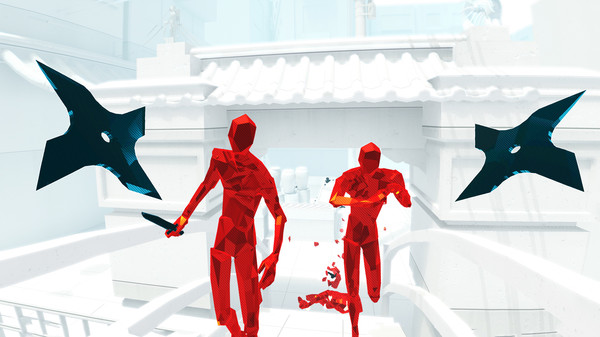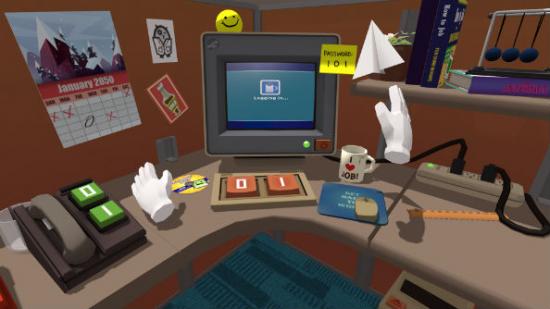Room-scale games continue to represent something of a high-water mark for virtual reality development. There are many reasons that this is a great thing, of course – chasing the holodeck holy grail is an entirely commendable quest. But right now, the technology seems to be largely out of touch with the reality of, well, rooms.
Stuck in a small room? Here’s a bunch of VR games you can play on the spot.
Don’t get me wrong, I’ve had some incredible room-scale VR experiences. I thrashed my opponent in CCP’s Project Arena (but sportingly shook their damp, meaty corporeal hand afterwards). I’ve used Owlchemy Labs’ Job Simulator to conclusively prove that I can be just as disruptive and unproductive in VR as I can in real-life work environments. And I’ve ruined robots in Aperture Labs’ human diversity outreach programme. A good time was had by all. But, crucially, none of these experiences occurred in any rooms belonging to me.
That’s because the room I play games in (my lounge, since you’re asking), apparently isn’t actuallyroom scale. I’ve tried, really, I have. By balancing Rift’s sensors on stacks of old whisky boxes (hey, don’t judge me), I just about managed to be beguiled by the excellent Superhot VR. The dents in the wall and my bruised – possibly broken – knuckles only underscore how much fun it all was. And having to continually shuffle back into the sensors’ field of view was no trouble at all while bent over backwards like a budget Neo, virtual bullets poised like fourth-dimension-ignoring death bees just above my upturned nose.

I also don’t mind one bit about all the times I bashed my shins on the coffee table – the one I had already moved to the very edge of my so-called ‘room’ – while shooting (and running from) zombies in Arizona Sunshine. You can’t have an undead apocalypse without pain, and I, for one, certainly don’t wish to experience a simulation of one that doesn’tinclude discomfort and injury. Thank goodness I drink so much whisky.
Before any of this calamity even occurs, of course, there’s the small matter of setting up all the required hardware – a task that’s almost as harrowing as trying to play these games anywhere other than a custom-built booth on a convention showfloor. I can’t mount Vive’s base stations on the wall because I, like so many other people, rent rather than own my sub-room-scale room (the indentations I’ve already caused with my super-hot fists are not ideally located). Tripods don’t work either, because I’d have to make some profound adjustments to my furniture layout in order to accommodate them, and risk being crushed by a toppling sofa (which, being sofa-scale, is really quite heavy).

There’s nowhere in my room to easily get Rift’s spindly sensors high enough, either, and the fact that they’re tethered to three of my dwindling supply of USB ports means that I have to drag my PC out into the centre of the room. It’s no biggie: I can barely feel anything in my lower legs anymore, so I’m not too concerned about walking into it.
None of this is stopping developers hurtling forth into the unknown, of course, merrily ignoring Chaperone grids in all their excitement. And, I’d like to stress, nor would I want it too – room-scale VR is unquestionably brilliant, and anything that broadens the range of available videogame experiences is OK in my book. It’s just that, for the £500-ish asking price of a decent setup, I would like manufacturers to chuck in a conservatory extension to accommodate all of their big ideas. Given everything that I have suffered so far, that doesn’t seem like too much to ask.
